Cards In This Set
| Front | Back |
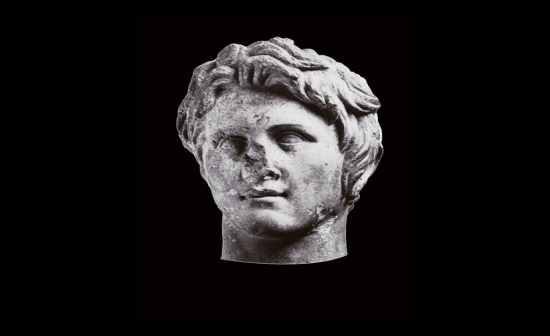 |
Head of Alexander, Roman copy of c. 330 BC Greek original. Marble.
Alexander the Great anastole hair creates a wreath/crown... it is off center parting -idealized generic look with no pronounced features fearless leader, King of Macedon |
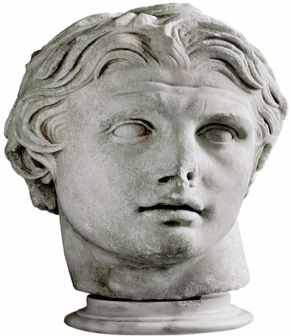 |
Portrait of Alexander from Pergamon c. 200-150 BC Greek original. Marble.
Alexander the Great anastole hair creates a wreath/crown fearless leader, King of Macedon |
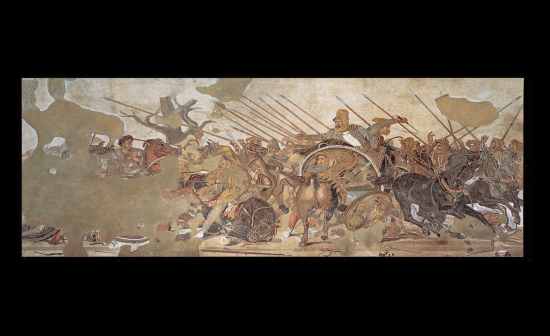 |
Alexander Mosaic: the culminating moment in the Battle of Issos between Greeks and Persians, the confrontation between Alexander and Darius. Floor mosaic from Pompeii, an adaptation of a Greek wall painting of a c.310 BC by, Philexenos of Eretria. 1st c. BC
-orginally on the floor -made of tiny tiles called tesserae -highly detailed, porbs commissioned by a really rich person |
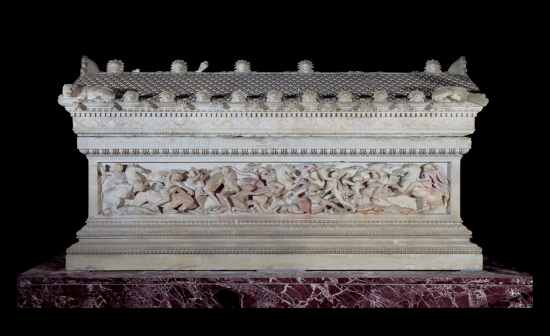 |
Alexander Sarcophagus, frieze panel: scene of Macedonians fighting Persians with Alexander at far left attacking on horseback. c. 320 BC. Marble.
-he killed a wild boar and enemy by 16 (manhood) -this tomb depicts Alexander but is probably for King of Sidon -Late Classical style -resembles a temple/treasury... pediments show combat, side friezes show princely pastimes (battle+hunt)... blends Greek architecture and Macedonian narrative -one side shows Macedonians fighting Persians -the other shows them hunting together -in high relief |
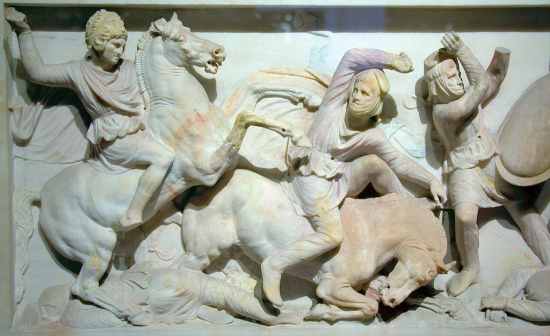 |
Alexander Sarcophagus, frieze panel: scene of Macedonians fighting Persians with Alexander at far left attacking on horseback. c. 320 BC. Marble.
-wears lionskin helmet... descended from Herakles... resembles Helios -Battle of Issus... Macedonians slashed the Persians and then Alexander made Abdalonymos king of Sidon |
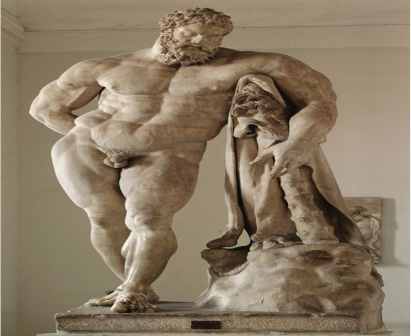 |
Herakles Farnese/Weary Herakles
3rd c. Romany Copy (Baths of Caracalla) of a Greek bronze by Lysippos (late 4th c. BCE) Hellenistic sculpture: diverse form/psychological presentation, realistic rendition Lysippos influenced new views, mental states/surprise, dramatic posture, portraiture, and personification |
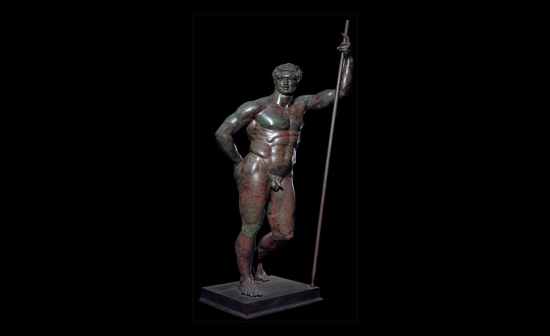 |
"Terme Ruler" Hellenistic Ruler, found in a Roman house on the Esquiline in 1884
c. 150 BC Bronze Hellenistic periods up to 250 BC is transition 250-150 is Hellenistic Baroque 150 onwards is the resurgence of Cliassicism under Romans |
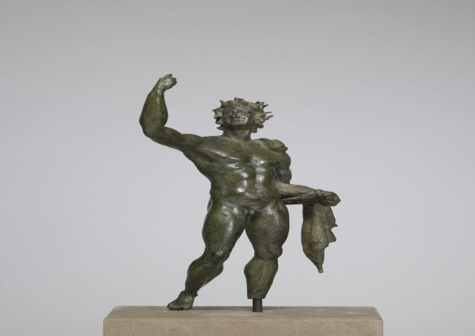 |
Ruler Portrait, maybe Alexander 2nd c. BCE
|
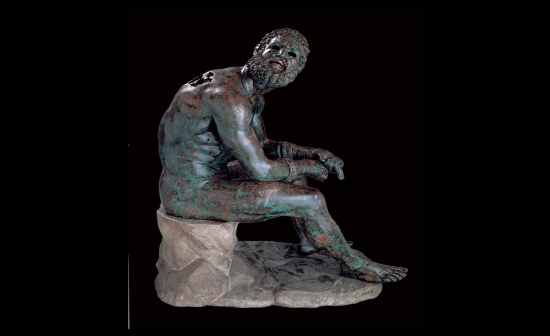 |
Seated boxer, found with the bronze Hellenistic ruler
c. 100-50 BC Bronze -simple pose and hair are classical, but reality of being beat up, copper blood, bruises are Hellenistic. Show resilience |
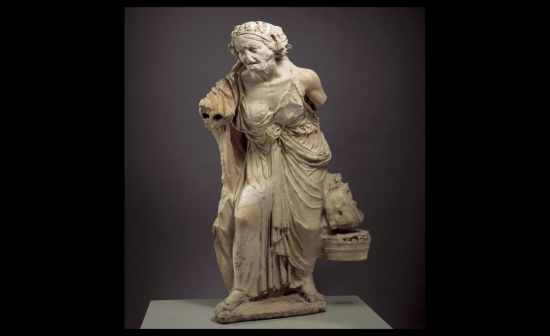 |
Old market woman
Late 2nd/early 1st c. BC copy of 3rd c. original -emotion/psyche -novel posture |
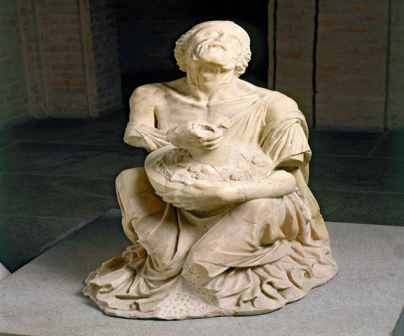 |
Drunken old woman
Roman copy of a Hellenistic original 3rd-2nd c. BCE |
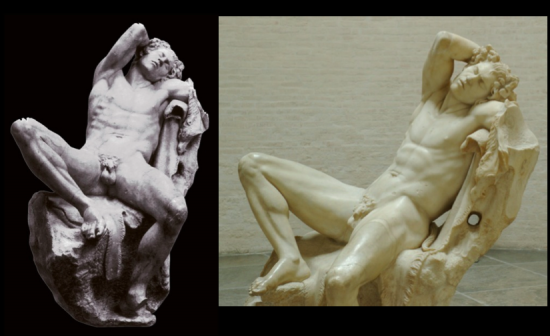 |
Sleeping Satyr, aka Barberini Faun, found in Rome, possible Hellenistic original c. 200 BC marble
-dramatic base -portrait of mind at rest and body relaxed -follower of Dionysos -vitality in sinew and veins |
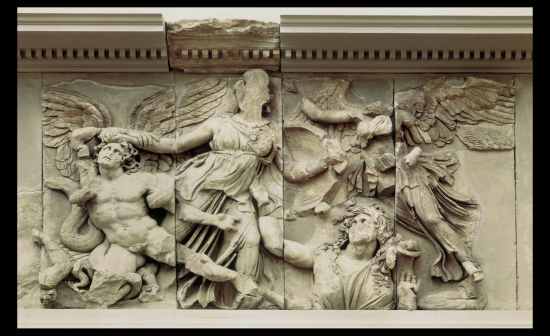 |
The Great Altar, Pergamon, east frieze: Athena fighting giants c. 175-150 BC marble
Hellenistic baroque: twisting posture, exaggerated musculaature of torso, high drama of the moment -marks crushing the revolt of Gauls, dedicated to all Gods -battle of gods and giants -adapted from Parthenon to link Pergamon and Athens... Greeks beat Persians like Gods beat Giants |
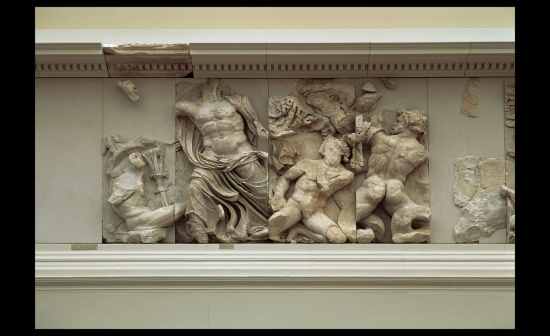 |
The Great Altar, Pergamon
east frieze: Zeus fighting giants c. 175-150 BC marble -adaptation of Poseidon on Parthenon |
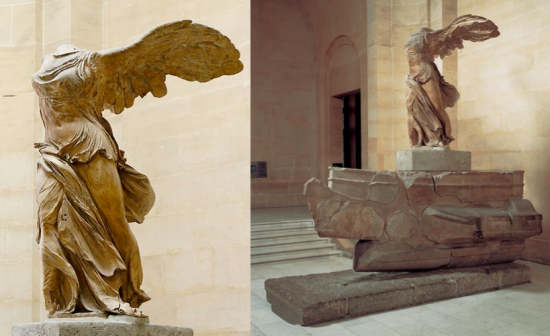 |
Nike (Victory) of Samothrace alighting on the victorious ship, perhaps by Pythokritos of Rhodes c. 180 BC marble
-manifestation of victory ... Hellenistic personification -twisting pose, drapery very Baroque ... but classic resonance of subject -theatrical setting on a ship-tip base in a pool... all this at the top of a cliff <3 -twists and swirls of fabric indicate rapid movement and twist |



